Software development company Belitsoft creates scalable and interactive web applications that engage users and fuel mission-critical workflows. From custom one page landings to complex enterprise-scale systems, our track record includes 200+ completed web projects, 70+ of them are middle and large (2000+ man/hours each).
We focus on long-term partnerships that is proven by many clients from the USA, the UK, Israel, Canada, and other countries that stay and grow with us for more than 5 years.

Outsource Web Development to Belitsoft
Decrease costs for development, get help on larger projects than you could do on your own, or hire dedicated web developers to fulfill knowledge gaps. With web development service provider Belitsoft you’ll build more web applications and make your customer very pleased with the product.



Our Web Development Services
At Belitsoft, we provide comprehensive web development services, ensuring the integrity, consistency, and user-friendliness of your software. With a focus on customization, we enable businesses to distinguish themselves in the evolving digital market. Our team is skilled in crafting high-performance digital solutions for both B2B and B2C entities, all while supporting security, adaptability, scalability, and cross-platform compatibility.
UI/UX Design
Our offshore dedicated development team creates custom designs that are visually appealing, intuitive, responsive, user-centric, and deliver tangible results. Expect a significant ROI within months of launch. We prioritize user experience throughout, from thorough research and requirement gathering to creating detailed sketches and mock-ups. Our designs, rooted in a deep understanding of user personas, ensure the end product resonates with your target audience. With advanced features such as Single Sign-On, gamification, detailed user profiles, and secure in-app payments, we improve user engagement and retention.
Front-end web development
Our frontend engineers develop and maintain responsive, accessible, and cross-browser compatible user interfaces, implement designs and ensure a seamless user experience in collaboration with UI/UX designers, and optimize front-end code for performance and scalability. They set a high bar for technical excellence, can anticipate and mitigate technical risks, have experience with several front-end languages and frameworks (including TypeScript and React), are proficient in various approaches to debugging, maintaining, and improving UI/UX systems, and have successfully shipped high-quality software into production.
Back-end web development
Our back-end developers develop and maintain server-side logic, implement and manage databases using SQL and NoSQL technologies, and develop APIs to bridge front-end and back-end systems. They design and optimize database schemas for efficient data storage and retrieval, write database queries, and improve their performance. We ensure that security, authentication, and authorization measures are implemented, as well as data integrity and consistency requirements are met.
CMS Integration
Our offshore development company focuses on creating and implementing custom CMS solutions with responsive UI, rich functionality, strong data security, and high scalability. These solutions enable efficient content creation, storage, and publishing, with robust architectures and essential API integrations for payments, user requests, and more. We offer efficient web content management with advanced features like AI analytics, personalized suggestions, and multi-language support for effective lead generation.
eCommerce web development
We build and enhance your eCommerce software with advanced features to increase sales, improve customer satisfaction and streamline your business operations:
- inventory management for easy management of products, stock levels, and orders
- real-time order tracking that keeps customers informed and reduces inquiries and concerns
- customer management for storing and segmenting customer information for targeted marketing
- integration with popular payment gateways such as PayPal, and Stripe for secure and efficient payments
- advanced reporting and analytics to track key metrics such as sales, traffic, and customer behavior
CRM web development
Our offshore CRM developers create custom CRM system to increase efficiency and profitability of your business by streamlining essential business processes, targeting potential customers and managing sales, inventory, and multi-channel selling. It also offers enhanced security and the ability to integrate with existing tools, making it easy to adapt and evolve as needed. Plus, the user-friendly interface simplifies adoption and leads to a more productive and successful business.
ERP web development
Our team of offshore ERP development experts will work with you to design and develop a web-based system that is tailored to your specific needs and goals. Custom web-based ERP solution allows to manage your operations from anywhere, at any time. It provides the necessary scalability to start small and gradually add more modules and functionalities as needed. There are often no hardware costs and minimal IT infrastructure required.
SaaS web development
Enter a growing market, attract a large customer base and gain a stable source of revenue in the form of subscriptions! We develop scalable web-based SaaS products with interfaces to administer the core application, maintain website content to attract new customers, manage user accounts, and bill customers.
Our offshore software architect and business analyst will help you make an informed decision on the perfect cloud provider. Trust our experts to design the optimal tenancy model (architecture) for your SaaS business.
 Enhancement of existing web solutions
Enhancement of existing web solutions
 UI/UX web design
UI/UX web design
 Consulting and business analysis
Consulting and business analysis
 QA and testing
QA and testing
 Custom web application development
Custom web application development
 Long-term support and maintenance
Long-term support and maintenance
Cloud-Based Web Application Development
While we focus on building cloud-first web applications from scratch, we also provide AWS migration services or Azure migration services to transfer and modernize applications, websites, databases, storage, and physical and virtual servers.

AWS Web Development
- We specialize in full-stack cloud-native web development, building robust backends — even for highly advanced apps empowered with the latest AI capabilities — and integrating them with engaging frontends using tools like AWS Amplify.
- With a combination of compute services like AWS Lambda / AWS Step Functions, we adopt a serverless approach to build solutions that could rapidly and flexibly scale.
- For API development, we utilize the Amazon API Gateway for REST APIs and employ Amazon AppSync for GraphQL APIs. We customize API Gateway usage plans to align with your business model. For SaaS web development, our expertise in multi-tenant design stands out.
- For database development, we leverage a range of AWS database services, from Amazon RDS and Aurora for scalable applications, DynamoDB for high-speed tasks, Neptune for graph-based operations, ElastiCache for real-time response, to Elasticsearch Service for full-text searches and analytics.
- Our DevOps team seamlessly integrates source control systems such as GitHub and AWS CodeCommit, ensuring smooth deployments to cloud environments like AWS Elastic Beanstalk.

Azure Web Development
- We utilize Azure App Service to develop and deploy web apps and REST APIs on any scale, using technologies like .Net Core, Java, Docker, Node.js, PHP, or Python.
- We can employ Azure Cognitive Search to incorporate search functionality, Azure Media Services for video streaming and Azure SignalR Service for real-time functionality, such as chat rooms, and live dashboards.
Rapid Web Development
We prioritize prototyping over planning in our rapid web development approach, leading to faster development compared to traditional methods. Quality, together with cost optimization, is key in our focus on delivering value quickly.
Digital Transformation. If you're undertaking a complete digital transformation, we can be your rapid web development partner.
App Modernization. We can help you modernize your existing apps, providing reliable services, and meeting uptime requirements.
New Interface Development. If you have an original idea for a new interface, we can help you bring it to life.
Vendor Replacement. If you've worked with another vendor that didn't meet expectations, we can step in and deliver the results you need.
Custom Web Application Development
Belitsoft offers custom software development services designed to adapt to any type and size of business. These services empower companies to provide unique functionality to their consumers while improving internal workflows. Custom web applications are developed for growing companies or corporations that demand advanced integration capabilities or software to meet their evolving requirements.
Custom User Functionality. When planning out a custom web application, we prioritize determining the user functionality aspect of the software. Whether the web application is being developed for internal use only or for external users, we consider requirements such as assigning and defining user roles, access control, document management, client communication functionality, and task management.
Security. We take measures to ensure that user information is secure and inaccessible to unauthorized users for custom web applications designed to provide users the ability to create personal profiles and store confidential information.
Custom Integrations. We integrate custom apps with third-party applications and APIs into external databases or websites, providing enhanced functionality and seamless user experience.
Post-Development Support. To ensure custom web applications run smoothly post-development, we consider efficient ways to track and manage changes to the application’s code through version control and bugs management and resolving.
Dedicated Web Development Services
Choose from our flexible cooperation models: whether you need an entire dedicated web development team, a single developer, or a turnkey solution managed end-to-end by our project manager. We specialize in building modern, scalable full-stack web apps that are secure, fast, and can scale for millions of users. Our approach mirrors the efficiency of an in-house team, but without the overheads of tax, social benefits, and HR expenses. The range of expertise spans business analyst, UX/UI designer, software developers, tech lead, project manager, quality assurance testers, DevOps engineers, and more—all tailored to fit your project needs.
For precision, we use a traceability matrix to match features with requirements. While Agile is our primary methodology due to its efficient, iterative outcomes, our team is also adept at methodologies like Waterfall and Scrum, ensuring quicker time-to-market and premium software quality. Open discussions about project requirements are always welcome before starting, and with our change request management program, responses and planning are swift.
 Facing a Lack of Resources?
Facing a Lack of Resources?
If your team is unable to complete the scope of work in a timely and efficient manner due to a lack of web development resources, our dedicated web developers can fill the gap.
 In Need of Specific Expertise?
In Need of Specific Expertise?
If your developers do not possess the necessary expertise to implement new features and scale the web application, our dedicated web developers can provide the required expertise.
 Experiencing Budget Constraints?
Experiencing Budget Constraints?
If budget constraints are preventing your company from scaling the web project, save on labor costs and access a wider pool of talent with high-quality offshore web development services.
Web Testing Services
Belitsoft offers comprehensive web application testing services, ensuring your web applications are robust, user-friendly, and secure. With our offshore testing team, businesses can enhance their test coverage by working on multiple projects at once, testing various features and functionalities in parallel. This approach speeds up the testing process and ensures a comprehensive examination of the application. Our experienced QA team uses both automated and manual testing methods to detect and prevent bugs effectively. We provide a detailed report to assist your developers in enhancing product functionality. Choose Belitsoft for a systematic, efficient, and high-quality testing process.
Functional Web Testing. We ensure each feature of your website works as required, contributing to a high-quality user experience and a fully-fledged flawless web application. This includes compatibility testing to ensure equal accessibility on all browsers and devices.
Usability Web Testing. We conduct usability testing to evaluate your product’s convenience with real users, analyzing how the target audience interacts with the website providing detailed recommendations for improvement.
Performance Web Testing. We test your website’s performance under different workloads to ensure stability and responsiveness at all times, providing you with a detailed report and tips for further improvement.
Security Web Testing. We conduct regular security tests to protect sensitive data, applying various approaches for penetration testing, code analysis, and other methods to test your security layers.
Our domain expertise
Using innovative custom designs and solid architecture, our team provides powerful and dynamic web solutions, including:
Stay Calm with No Surprise Expenses
- You get a detailed project plan with costs associated with each feature developed
- Before bidding on a project, we conduct a review to filter out non-essential inquiries that can lead to overestimation
- You are able to increase or decrease the hours depending on your project scope, which will ultimately save you a lot of $
- Weekly reports help you maintain control over the budget
Don’t Stress About Work Not Being Done
- We sign the Statement of Work to specify the budget, deliverables and the schedule
- You see who’s responsible for what tasks in your favorite task management system
- We hold weekly status meetings to provide demos of what’s been achieved to hit the milestones
- Low personnel turnover rate at Belitsoft is below 12% per annum. The risk of losing key people on your projects is low, and thus we keep knowledge in your projects and save your money
- Our managers know how to keep core specialists long enough to make meaningful progress on your project.
Be Confident Your Secrets are Secure
- We guarantee your property protection policy using Master Service Agreement, Non-Disclosure Agreement, and Employee Confidentiality Contract signed prior to the start of work
- Your legal team is welcome to make any necessary modifications to the documents to ensure they align with your requirements
- We also implement multi-factor authentication and data encryption to add an extra layer of protection to your sensitive information while working with your software
No Need to Explain Twice
- With minimal input from you and without overwhelming you with technical buzzwords, your needs are converted into a project requirements document any engineer can easily understand. This allows you to assign less technical staff to a project on your end, if necessary
- Communication with your agile remote team is free-flowing and instantaneous, making things easier for you
- Our communication goes through your preferred video/audio meeting tools like Microsoft Teams and more
Mentally Synced With Your Team
- Commitment to business English proficiency enables the staff of our offshore software development company to collaborate as effectively as native English speakers, saving you time
- We create a hybrid composition, where our engineers work with your team members in tandem
- Work with individuals who comprehend US and EU business climate and business requirements
Technologies and tools we use
Our skilled developers keep up to date with the latest technologies and follow industry best practices for software development. We deliver clean, error-free code with a strong commitment to standards, syntax, principles of Object-Oriented Programming and intuitive design.
Whether it's leveraging the speed and simplicity of Spring, utilizing the elegance of Laravel/Lumen, harnessing the power of Python-based frameworks like Django and Flask, or adapting to a variety of other backend technologies, our seasoned developers are capable of building, deploying, and maintaining scalable, robust, and secure backends.
Portfolio

Recommended posts
Our Clients' Feedback

























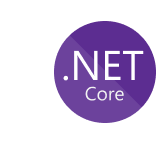






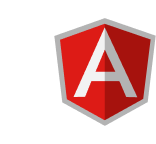





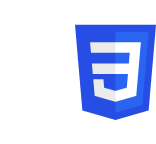



















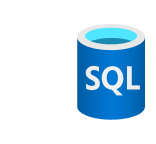

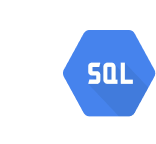







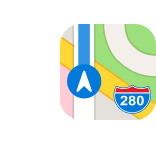






























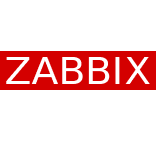





























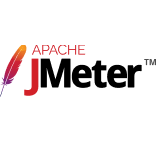








.jpg)

.jpg)
.jpg)
















We have been working for over 10 years and they have become our long-term technology partner. Any software development, programming, or design needs we have had, Belitsoft company has always been able to handle this for us.
Founder from ZensAI (Microsoft)/ formerly Elearningforce